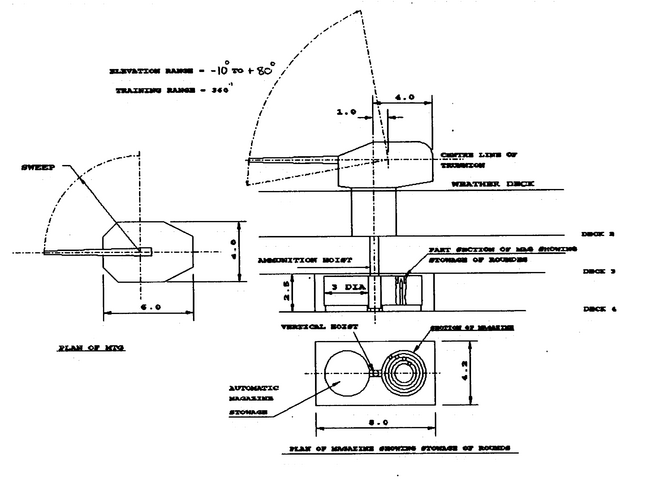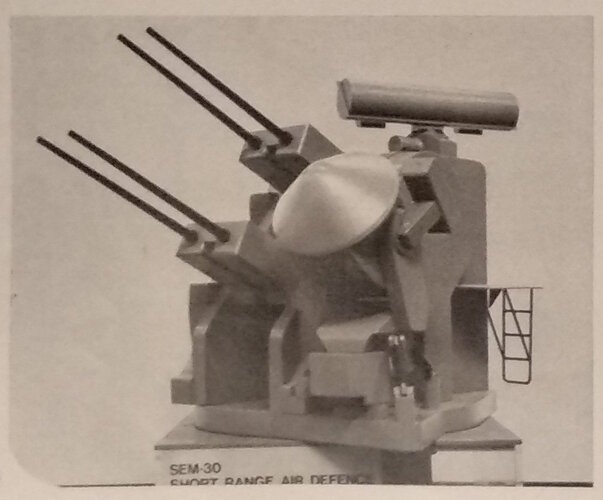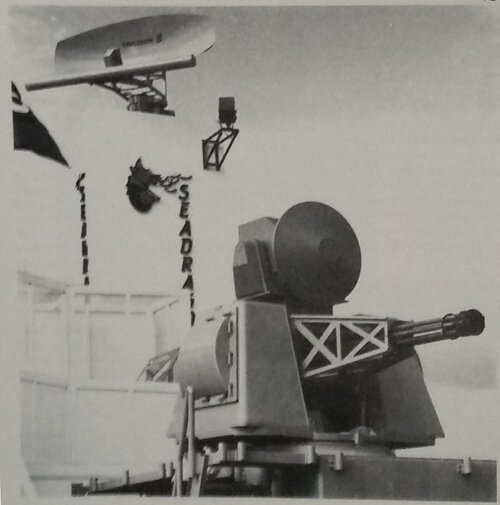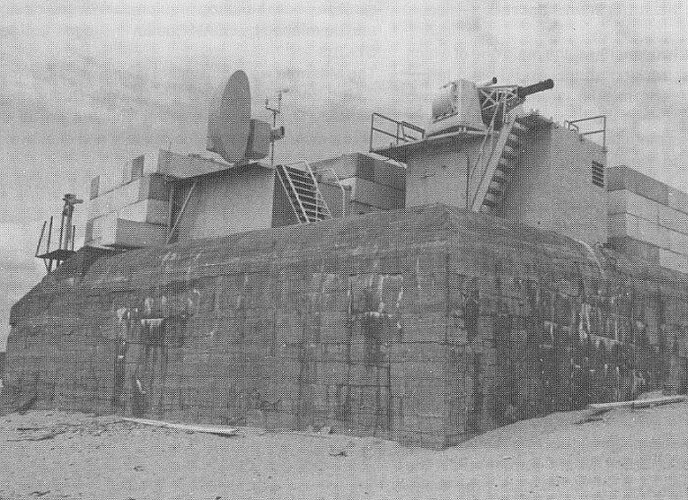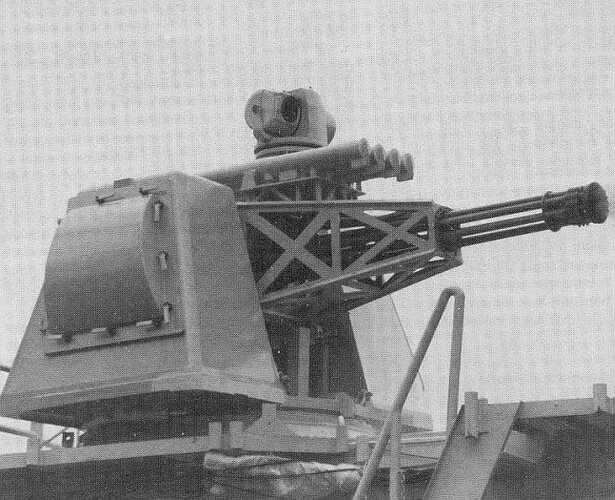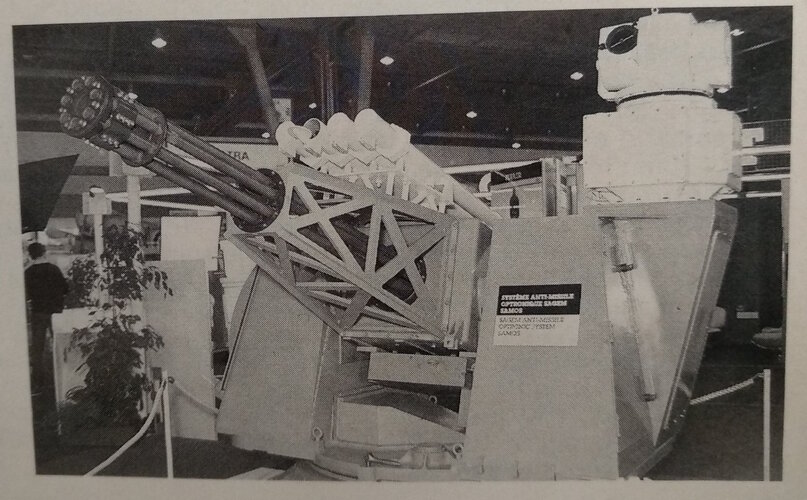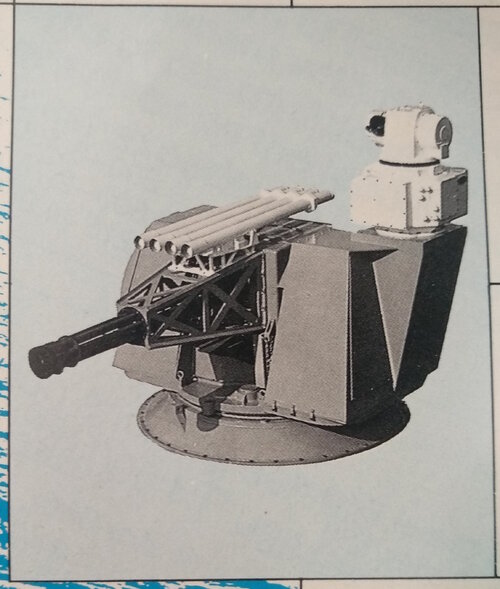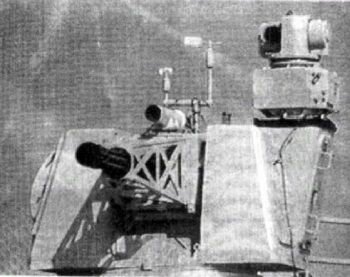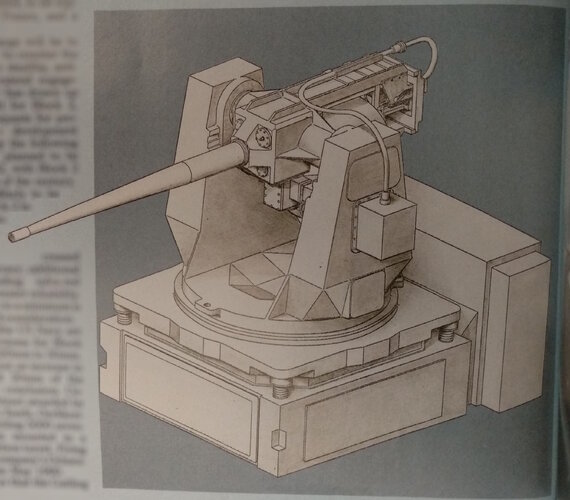You are using an out of date browser. It may not display this or other websites correctly.
You should upgrade or use an alternative browser.
You should upgrade or use an alternative browser.
Naval Gun Projects
- Thread starter RP1
- Start date
Bottleship
ACCESS: Secret
- Joined
- 30 June 2019
- Messages
- 493
- Reaction score
- 1,264
Maybe.Krupp built 508mm cannons by 1918?
I already know what you're thinking - a model of a battleship with eight 508 mm cannons
But most likely these are coastal guns.
Bottleship
ACCESS: Secret
- Joined
- 30 June 2019
- Messages
- 493
- Reaction score
- 1,264
It's difficult to say how reliable this is.Question is what is the source of the book for these guns?
In Soviet publications, in data on the Second Reich, the production plan was often written as actual production - this was the case, for example, with machine guns (allegedly by the spring of 1916, the Germans had already produced more than 100 thousand machine guns since the beginning of the war, although in fact this was not implemented, and to in the spring of 1916, about 20 thousand of them were produced since the beginning of the war), or, with tanks (the Second Reich allegedly had a “tank industry” on a par with France, Britain and the USA, although in reality the Reich only planned to organize the production of tanks in 1919, and actually produced 20 A7V and several prototype vehicles), in addition, calculations of guns allegedly produced in the Reich during the war years in Soviet statistics often include the production of mortars and / or repair of guns. What was this connected with? - of course, with politics, according to Soviet ideology, Russia before the communists was a backward feudal state, while other powers were advanced capitalist, accordingly, it was necessary to show the superiority of the Reich and other capitalist powers over the backward Russian Empire (after the revolution there were similar manipulations, only in reverse side to show the advantage of Soviet socialism over backward capitalism). It is possible that these 457 and 508 mm guns were projects and were never manufactured, but, against the backdrop of stories that Russia “could not even manufacture 14-inch guns,” this, of course, looks impressive. Of course, they preferred not to remember that the communists disposed of unfinished 16-inch naval guns and 16-inch siege howitzers after the revolution. And, by the way, almost all Soviet data on the growth of production during the “Stalin's industrialization” of 1929-1941 are speculative, they underestimated production in the Russian Empire by several times in order to look better, but many researchers are still uncritical of these figures.
Last edited:
Dilandu
I'm dissatisfied, which means, I exist.
Most likely the original data was in inches, and it was merely translated into millimeters.Naah but the calibre choice is weird knowing the Germans preferred different calibres:
281,305,380,420mm I would expect 460 or 480 then 500 or 520mm
I'm (mostly) sure I haven't posted this before. This is an item from an old databook used for a teaching exercise. All the other systems in the databook are either real, or things that were later cancelled (like boxed Ikara), just with the names filed off. So what is the real world or project equivalent to this? It is quoted as being a 1200 with 40 rpm ROF. The funny twin magazine seems familiar, but I can't quite place it?
Attachments
Scott Kenny
ACCESS: USAP
- Joined
- 15 May 2023
- Messages
- 11,553
- Reaction score
- 14,147
Green Mace?I'm (mostly) sure I haven't posted this before. This is an item from an old databook used for a teaching exercise. All the other systems in the databook are either real, or things that were later cancelled (like boxed Ikara), just with the names filed off. So what is the real world or project equivalent to this? It is quoted as being a 1200 with 40 rpm ROF. The funny twin magazine seems familiar, but I can't quite place it?
A Tentative Fleet Plan
I really should change my personal text
- Joined
- 9 April 2018
- Messages
- 1,212
- Reaction score
- 2,831
This mounting?I'm (mostly) sure I haven't posted this before. This is an item from an old databook used for a teaching exercise. All the other systems in the databook are either real, or things that were later cancelled (like boxed Ikara), just with the names filed off. So what is the real world or project equivalent to this? It is quoted as being a 1200 with 40 rpm ROF. The funny twin magazine seems familiar, but I can't quite place it?
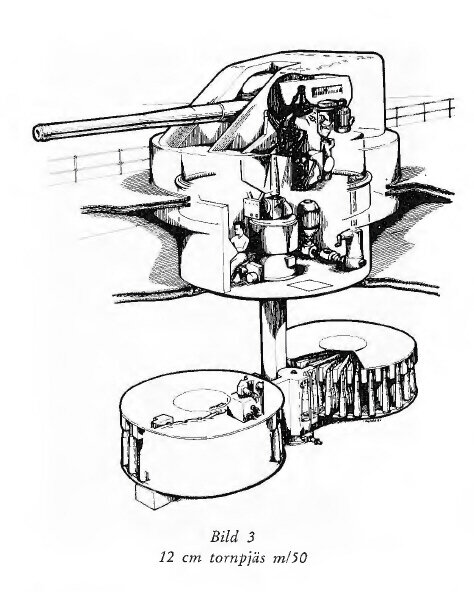
- Joined
- 16 April 2008
- Messages
- 9,601
- Reaction score
- 14,474
ANd where is that from? It's not the TAK120 that I'm familiar with.
ooooo... so that one is in the book as "120mm Mk1" and the one I posted is the Mk2!
A Tentative Fleet Plan
I really should change my personal text
- Joined
- 9 April 2018
- Messages
- 1,212
- Reaction score
- 2,831
ANd where is that from? It's not the TAK120 that I'm familiar with.
It was posted in this thread. Apparently a late 1950s Bofors design, although the original post says it had a rate-of-fire of 70rpm.ooooo... so that one is in the book as "120mm Mk1" and the one I posted is the Mk2!
- Joined
- 3 January 2006
- Messages
- 1,223
- Reaction score
- 940
Confusingly, I’ve read that the little known single 120mm L50 was designed by Bofors for the early West German Navy for a larger class of destroyers that was cancelled in favor of smaller ships with 100mm French guns.It was posted in this thread. Apparently a late 1950s Bofors design, although the original post says it had a rate-of-fire of 70rpm.
Mc spoilt b’stard
ACCESS: Restricted
- Joined
- 14 February 2022
- Messages
- 32
- Reaction score
- 90
I was wondering if there were some post ww2 plans (studies, concepts or even full designed guns) for naval applications of the 88 mm caliber , especially for surface ships? With its caliber right in between the US/Italian 76 mm (3''), French 100 mm (3,9'') or UK's 113 mm (4.5'') it would have been a powerful but still light naval cannon for the '50's - '60's.
- Joined
- 16 April 2008
- Messages
- 9,601
- Reaction score
- 14,474
I was wondering if there were some post ww2 plans for naval applications of the 88 mm caliber , especially for surface ships? With its caliber right in between the US/Italian 76 mm (3''), French 100 mm (3,9'') or UK's 113 mm (4.5'') it would have been a powerful but still light naval cannon for the '50's - '60's.
I've never seen one. Can't imagine who would have been interested, since it had never been a very popular naval caliber, even with the Germans.
If there had been interest in an intermediate, surely 90mm would have made more sense in the West, since the US had a very good gun and ammunition family already. But 100mm was probably the smallest caliber truly viable for shore bombardment (4.5-inch or 5-inch being much better) and 76mm was perfectly adequate for AAW and FAC-busting ASuW (especially in the fast-firing, high-velocity versions that came about in the 1950s and 1960s).
A Tentative Fleet Plan
I really should change my personal text
- Joined
- 9 April 2018
- Messages
- 1,212
- Reaction score
- 2,831
Video on the US Navy BuOrd's 1970s Gun Improvement Program:
Mainly concerns the 5"/54 Mark 42 Mod 10, improved fire control by adding new systems to the Mk 68 fire control system, improved types of ammunition, including laser-guided, and briefly mentions a proposed follow-on to the 8-inch Mk 71:
View: https://youtu.be/Sd9lNJFF0uo?feature=shared
Mainly concerns the 5"/54 Mark 42 Mod 10, improved fire control by adding new systems to the Mk 68 fire control system, improved types of ammunition, including laser-guided, and briefly mentions a proposed follow-on to the 8-inch Mk 71:
Scott Kenny
ACCESS: USAP
- Joined
- 15 May 2023
- Messages
- 11,553
- Reaction score
- 14,147
At ~3:30 in that video, it looks like a FRAM can has the Mk13 launcher in place of the aft gun. Am I seeing that correctly?
And if so, was that just for testing, or were more FRAM cans converted that way?
And if so, was that just for testing, or were more FRAM cans converted that way?
- Joined
- 16 April 2008
- Messages
- 9,601
- Reaction score
- 14,474
At ~3:30 in that video, it looks like a FRAM can has the Mk13 launcher in place of the aft gun. Am I seeing that correctly?
And if so, was that just for testing, or were more FRAM cans converted that way?
It's not a FRAM; the guns are definitely 5"/54 Mk 42s. I believe it's a C.F. Adams, somewhere after DDG-14. (-15 and later have the Mk 13 instead of Mk 11)
that_person
ACCESS: Secret
- Joined
- 25 May 2021
- Messages
- 337
- Reaction score
- 643
That’s definitely an Adams
- Joined
- 16 April 2008
- Messages
- 9,601
- Reaction score
- 14,474
It's not a FRAM; the guns are definitely 5"/54 Mk 42s. I believe it's a C.F. Adams, somewhere after DDG-14. (-15 and later have the Mk 13 instead of Mk 11)
Further to this, I think there was only one Gearing missile conversion for the USN, USS Gyatt (DDG-1). But she was a Terrier ship, an exercise in just how small a Terrier ship could be. She fairly quickly lost the missiles and became a general test and training platform.
- Joined
- 10 April 2021
- Messages
- 401
- Reaction score
- 1,556
The SEM-30 (Signaal-Emmerson-Mauser) was a CIWS investigated by the Netherlands for Goalkeeper that used 4 Mauser 30mm guns. It lost out to the GAU-8 solution (SGE-30) on grounds of accuracy and fire rate:
IDR 10/1983During the Assist investigation, various combinations of sensors, fire-control systems and weapons were evaluated. The easiest task, according to Signaal, was to select the radar and fire-control system.
The choice of weapon proved more difficult. Studies had shown that a gun with a calibre of at least 30mm and a high rate of fire was necessary. A twin 35mm mount was investigated at first but was found to have an insufficient firing rate: analysis had shown that a rate of at least 3,000 rounds/min, coupled with a very low dispersion, would be needed to counter the projected threat from supersonic missiles.
The second concept, designated SEM-30, was based on an Emerson Electric mount carrying four Mauser 30mm single-barrelled cannon. Problems of focussing the barrels to a single optimised aiming point, together with the relatively low MRBF (mean rounds between failure) of reciprocating guns, were however foreseen for this solution. In addition, further analysis had revealed that a firing rate even higher than 3,000 rounds/min was desirable against a manoeuvring target.
Signaal and the RNeth N therefore selected the General Electric GAU-8/A seven-barrel 30mm Gatling as the best overall weapon
for Goalkeeper, and this combination was designated SGE-30. The GAU-8/A has the advantages of a 4,200 rounds/min firing rate combined with low dispersion and high reliability.
IDR 6/1978SEM-30 is designed to 'kill' target missiles by direct hit, having a design dispersion of only 1.5 mrad. Each rigidly-mounted barrel fires at a rate of 800 rpm and a muzzle velocity of 1,400 m/sec. Mount elevation and azimuth training velocities are 80°/sec and
100°/sec, respectively, and accelerations in these axes are 125°/sec² and 200°/sec². Weight of mount is 5,416 kg and system weight totals 7,463 kg.
Attachments
1635yankee
Recovering aeronautical engineer
- Joined
- 18 August 2020
- Messages
- 554
- Reaction score
- 766
If it was, it may have been in one of the obsolete German zoll, which were 1/10, 1/11 or 1/12 of the various German feet (Fuß). The one used in Berlin was about 313.9 mm (from the potentially dubious https://en.wikipedia.org/wiki/German_units_of_measurement). The length of the German zoll could be something between 19.7 mm and 48 mm.Most likely the original data was in inches, and it was merely translated into millimeters.
It's not surprising that the German Empire went metric shortly after unification.
- Joined
- 10 April 2021
- Messages
- 401
- Reaction score
- 1,556
From RINA's "The Naval Architect" November 1983, review of RNEE 1983:
• Vickers "Sea Dragon" CIWS.
• GAU-8A based system
• Project started in 1972, but not publicly announced until 1982
• Ericsson Giraffe C-band radar for detection (separate unit)
• On-mount tracking radar same as in the LWSW proposals - Marconi set (VFM-30?)
• Ferranti processing equipment
• Jokingly suggested that system designator of "GBG-30" means "Great British Gun"
• Mounting similar to Goalkeeper, without E/O and surveillance radars, and with slightly larger FCR
-RP1
Attachments
- Joined
- 10 April 2021
- Messages
- 401
- Reaction score
- 1,556
Also in a thread from 2012 on whatifmodellers.com someone linked to some resources on the Sea Dragon on the site of The Dock Museum Barrow-in-Furness. The link unfortunately doesnt work any more and isnt archived, and a short search of the site also didnt turn anything up.
The Vickers Photographic Archive on the same site may however be of interest to some people on this forum.
The Vickers Photographic Archive on the same site may however be of interest to some people on this forum.
- Joined
- 10 April 2021
- Messages
- 401
- Reaction score
- 1,556
Two more EX-83/Sea Vulcan 30 based CIWSs:
The Sagem SAMOS and the Thomson CSF SATAN
Samos used a mounted optical fire control system, while Satan had a separate fire control radar.
Samos could also have 4 MANPADs installed.
The Sagem SAMOS and the Thomson CSF SATAN
Samos used a mounted optical fire control system, while Satan had a separate fire control radar.
Samos could also have 4 MANPADs installed.
Attachments
- Joined
- 10 April 2021
- Messages
- 401
- Reaction score
- 1,556
From IDR 1/1991:
The Naval Systems Division of FMC Corporation has recently received a $4.6 million contract to design, develop, fabricate and test an Electrothermal (ET) gun/autoloader mounted on a Mk 15 Phalanx trunnion assembly. The 60mm gun will fire a 3.5kg smart munition at 1.0km/s muzzle velocity.
Attachments
Forest Green
ACCESS: Above Top Secret
- Joined
- 11 June 2019
- Messages
- 9,467
- Reaction score
- 17,277

The Time Germany Grafted An Army Howitzer Turret Onto A Frigate
The bizarre-looking modification installed the turret of a PzH 2000 self-propelled howitzer onto the frigate Hamburg. The bizarre-looking modification grafted the turret of a PzH 2000 self-propelled howitzer onto the frigate Hamburg.
- Joined
- 16 April 2008
- Messages
- 9,601
- Reaction score
- 14,474

The Time Germany Grafted An Army Howitzer Turret Onto A Frigate
The bizarre-looking modification installed the turret of a PzH 2000 self-propelled howitzer onto the frigate Hamburg. The bizarre-looking modification grafted the turret of a PzH 2000 self-propelled howitzer onto the frigate Hamburg.www.twz.com
Search for MONARC and you'll see this has been mentioned quite a few times. This article could have been written using the info already on this site (and may well have been).
A_Random_Guy
ACCESS: Confidential
- Joined
- 24 May 2022
- Messages
- 72
- Reaction score
- 134
Does anyone have information on the free swinging 35mm single gun that the U.S. was looking into after WW2? I've seen it pop up time to time (in Norman Friedman's books and on some of the early postwar U.S. notional ship designs) but haven't seen anything more definative.
Beyond that I know there were some improvised 30mm free swinging mounts (see picture) made by the Germans using modified aircraft cannons so the idea of a free swinging 35mm gun isn't completely out there but there's just not much on the project from what I've been able to find.

Beyond that I know there were some improvised 30mm free swinging mounts (see picture) made by the Germans using modified aircraft cannons so the idea of a free swinging 35mm gun isn't completely out there but there's just not much on the project from what I've been able to find.
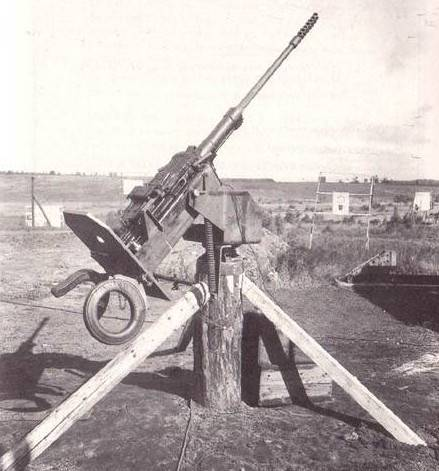
- Joined
- 3 January 2006
- Messages
- 1,223
- Reaction score
- 940
Does anybody have any images of the LS30R? i am curious about the feed system on the RARDEN that was used, surely there must have been some modifications to suit the transition from the 3 round clips to a 21 round magazine? I did a google books search today and Warship Volume VII (which I do not have a copy of) seems to suggest that actually there were three proposed variants and only the Mk3 would have the clip-on 21 round magazine.
Also really interested in information or images on the Vickers GBN. It was a 155mm designed for naval use and was unveiled in 1983, it was a counterpart to the GBT turret that eventually evolved into the AS90, both derived from UK work on SP70. In 1991 Vickers displayed a mock-up of what they called the N155-2000, basically a 155mm version of the 4.5 inch Mk8, I assume using Vickers UFH (Ultralight Field Howitzer- eventually became M777) barrel, basically the same as what BAE has been playing with recently through the 155mm TMF before it was abandoned in 2010.
The Vickers GBN appears to have been an unaltered 155mm GBT turret, albeit slightly elevated on a pedestal above the deck. It appeared on a 105 meter frigate concept by Vickers in the mid-1980s. Thanks for providing chronology for these two projects. The more ambitious RO-BAE 155mm L/52 projects appear in 2001 and the door finally closes on the more modest TMF in 2010.
blockhaj
Swedish "want to be" aviation specialist
- Joined
- 9 February 2017
- Messages
- 404
- Reaction score
- 505
Similar threads
-
-
-
Postwar Royal Navy Battleships? (NOT including the Vanguard!)
- Started by Blacktail
- Replies: 81
-
-

